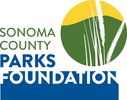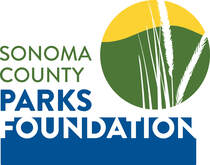Vamos a Nadar: Let's Swim!
Teaching young children and families how to be safe around water continues to be an urgent summertime issue. Regional Parks launched Vamos a Nadar (Let’s go Swimming) in 2004 to reduce the number of drowning deaths in Sonoma County, particularly at the Russian River. Since that time, Vamos a Nadar has reached more than 2,000 young people in Sonoma County. At the Vamos sessions, children receive a free swim lesson while parents learn about the hazards presented by pools, rivers and lakes. Among other things, the classes inform parents how to evaluate conditions, emphasize the importance of observing aquatic safety rules, and provide tips for monitoring children, as well as rescue techniques for areas where lifeguards are not present.
Both the Parks Foundation and Regional Parks’ lifeguard staff strongly believe in the efficacy of Vamos a Nadar, which typically serves families with limited resources who otherwise may not be able to afford swim lessons. After each workshop, families are invited to enjoy and explore the swimming areas together. Each family also receives a coupon for additional swim lessons at partners' pools throughout Sonoma County for a reduced price of $15 (normally at least $50 per child).
For Fiscal Year 2022-23, Regional Parks has asked the Parks Foundation to raise $16,000 for Vamos a Nadar, which would offset costs for lifeguard instructional time and help underwrite discounted swim lessons at local public pools. We hope you’ll join us in support of this critical life-saving program. For more information, please contact Melissa Kelley at [email protected].
Both the Parks Foundation and Regional Parks’ lifeguard staff strongly believe in the efficacy of Vamos a Nadar, which typically serves families with limited resources who otherwise may not be able to afford swim lessons. After each workshop, families are invited to enjoy and explore the swimming areas together. Each family also receives a coupon for additional swim lessons at partners' pools throughout Sonoma County for a reduced price of $15 (normally at least $50 per child).
For Fiscal Year 2022-23, Regional Parks has asked the Parks Foundation to raise $16,000 for Vamos a Nadar, which would offset costs for lifeguard instructional time and help underwrite discounted swim lessons at local public pools. We hope you’ll join us in support of this critical life-saving program. For more information, please contact Melissa Kelley at [email protected].




